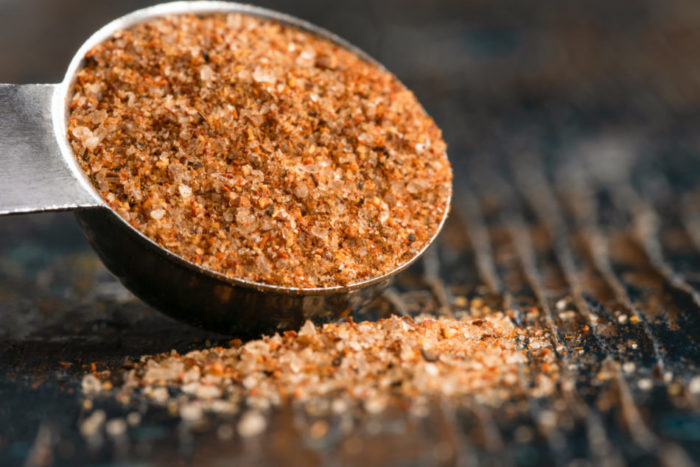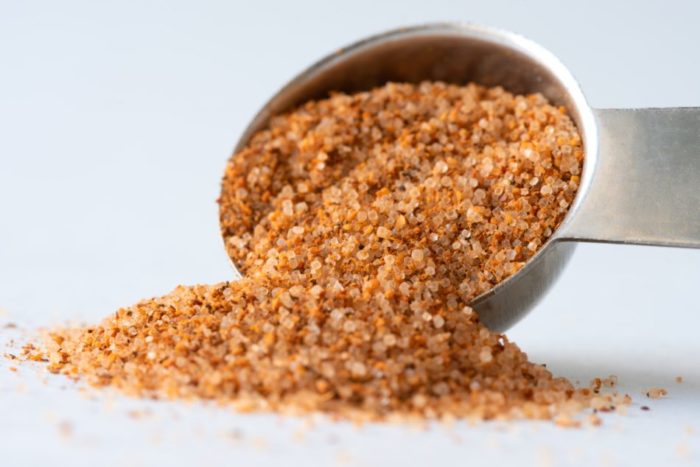
Cajun and creole seasoning are two famous spice blends that find use in a whole lot of recipes. These spice blends are similar and can thus prove to be confusing when picking the right choice.
Let’s get started!
So, let’s make things clearer to get a better understanding of cajun vs creole seasoning. With this effort, we’ll also get a better understanding of the uses of these seasonings and the best time and recipe to use either.
Cajun vs Creole Seasoning – Key Elements And Differences
The Origin Story Holds The Key To Differences
Cajun seasoning came to be after French settlers in the Acadia region of Canada were forced out. They moved and settled into the bayous of Louisiana.
In this area, which came to be known as New Orleans, the fusion of French cuisine with Native American, West African, and Caribbean cuisine brought about the cajun style of cooking. And eventually, this also brought about the cajun seasoning.
Creole seasoning originated in the same region, but with a different twist. It’s believed to have come from the French settlers in Louisiana, though by this time, the region had received more settlers and the culinary fusion spans more cultures.
Creole cuisine and seasoning carry influences from the cuisines of France, Africa, the Caribbean, Italy, Portugal, and Spain.
The similarity of both these spice mixes is evident given their origins. Yet, there is also an element of distinction to both these spice blends.

Setting Up The Spices – The Difference In Ingredients
Cajun seasoning is usually on the spicier side of things. It includes quite a few peppers in the recipe and they bring the heat with them. Ground black pepper, ground cayenne pepper, ground white pepper, and maybe some others make their way into the cajun seasoning.
On the other hand, creole seasoning prefers to take the path of herbs, rather than peppers. The primary herbs in this seasoning include oregano, rosemary, thyme, and paprika.
Speaking of ingredients, here’s one of note – tomatoes! While not specifically related to the seasoning, it has some effect on the taste. Cajun cuisine doesn’t use tomatoes, while creole cuisine does.
The Flavor Difference
Considering the difference in flavor and origins of these seasonings, it’s only natural that we see a difference in flavor as well.
Creole seasoning has an earthy flavor with a wonderful aroma. This is largely due to the use of herbs as a key ingredient in this seasoning.
Cajun seasoning has a spicy, bold taste, and brings heat to the recipe. The presence of a variety of peppers ensures that this seasoning has its classic bold and spicy flavor.
What Is Creole Seasoning?
Now that we’ve got the history, basics, and differences, let’s get a clear definition of this seasoning.
Creole seasoning originated in the New Orleans region of Louisiana. It has the effect of French cuisine since it came from the descendants of French settlers in the region. However, this seasoning or cuisine isn’t distinctly French.
The seasoning and Creole cuisine in general gets an impact from a variety of cultures and cuisines. The cuisines contributing to the overall creole cuisine and seasoning are French, Italian, Portuguese, West African, and Spanish.
Creole seasoning relies on herbs like oregano, rosemary, and thyme for its unique flavor and taste. This gives it an earthy flavor and excellent aroma.
What Is Cajun Seasoning?
Cajun seasoning came about when the French settlers of Acadia moved to Louisiana and the New Orleans region. The blend of spices comes from the Acadian/French cuisine mixing with other cuisines like Native American, West African, and Jamaican.
Peppers see generous use as the ingredients of this seasoning. You can reasonably expect cajun seasoning to contain a fair amount of ground black pepper, cayenne pepper, white pepper, and similar ingredients.
The presence of all these peppers gives cajun seasoning a good feel of hot and spicy flavors. The hallmark of this seasoning is being bold and flavorful.
It’s worth noting at this point that ingredients in cajun and creole seasoning are not mutually exclusive. The seasonings can share ingredients, it’s just that creole will rely more on herbs, while cajun prefers peppers.
So, if you’ve ever wondered is creole and cajun seasoning the same, your question and confusion are understandable. These seasonings are closely related and can often work as substitutes for each other in several recipes.
However, despite their similar origins and flavors, there are distinct differences between these two seasonings. You could call them similar, but they’re far from being the same.
FAQ And More Details
How To Make Creole Seasoning?
Delicious and exotic as the seasoning is, it is possible to make creole seasoning at home. It only takes a few minutes and if you get the ingredients right, it can take on store-bought seasoning with ease.
Making famous spice blends like creole seasoning and garam masala can seem daunting, but it’s rather possible and fairly simple if you know your way around the kitchen. You’ll need specific ingredients, but it’s not necessary to be exact with their measurements. There’s a good chance that a good blend doesn’t even need all the ingredients. You could skip a few and still make a wonderful creole blend.
Remember, creole seasoning relies heavily on herbs, but peppers aren’t out of question either. Let’s see how to make a delicious creole seasoning blend.
Here’s what you’ll need:
- Paprika: 5 tbsp (tablespoon)
- Oregano: 2 tbsp
- Thyme: 2 tbsp
- Basil: 1.5 tbsp
- Salt: 1.5 tpsp (or according to taste)
- Onion powder: 1.5 tbsp
- Garlic powder: 1.5 tbsp
- Black pepper: 1 tbsp
- Cayenne pepper: 0.5 tbsp
- White pepper: 1 tbsp
When you have the ingredients ready, put them in a jar, preferably one with a lid. Shake the mix thoroughly until the ingredients mix up nice and well. You can keep the blend in the current container as long as it’s airtight. Remember to store it away from direct heat, light, and moisture.
Is Creole Seasoning Spicy?
Creole seasoning contains some spices, but it usually isn’t characterized as spicy. The seasoning instead relies on the earthy flavors and wonderful aroma of herbs. Key component herbs of creole seasoning are oregano, thyme, rosemary, and basil.
As with cajun seasoning, it does contain some spice in the form of peppers. However, they don’t dominate the flavor for this blend.
Where To Buy Creole Kick Seasoning?
Creole Kick seasoning is very popular and widely available. You can get it from most big box stores, stores/shops, and even online.
Conclusion
Given their similarities and region of origin, people often end up wondering if creole and cajun seasoning are the same. However, as we see in this cajun vs creole seasoning treatise, these seasonings are quite different.
Though there is a significant overlap in the ingredients of these seasoning blends, they favor different flavors. Cajun seasoning prefers a bold and spicy flavor while creole seasoning goes the way of earthy and aromatic.